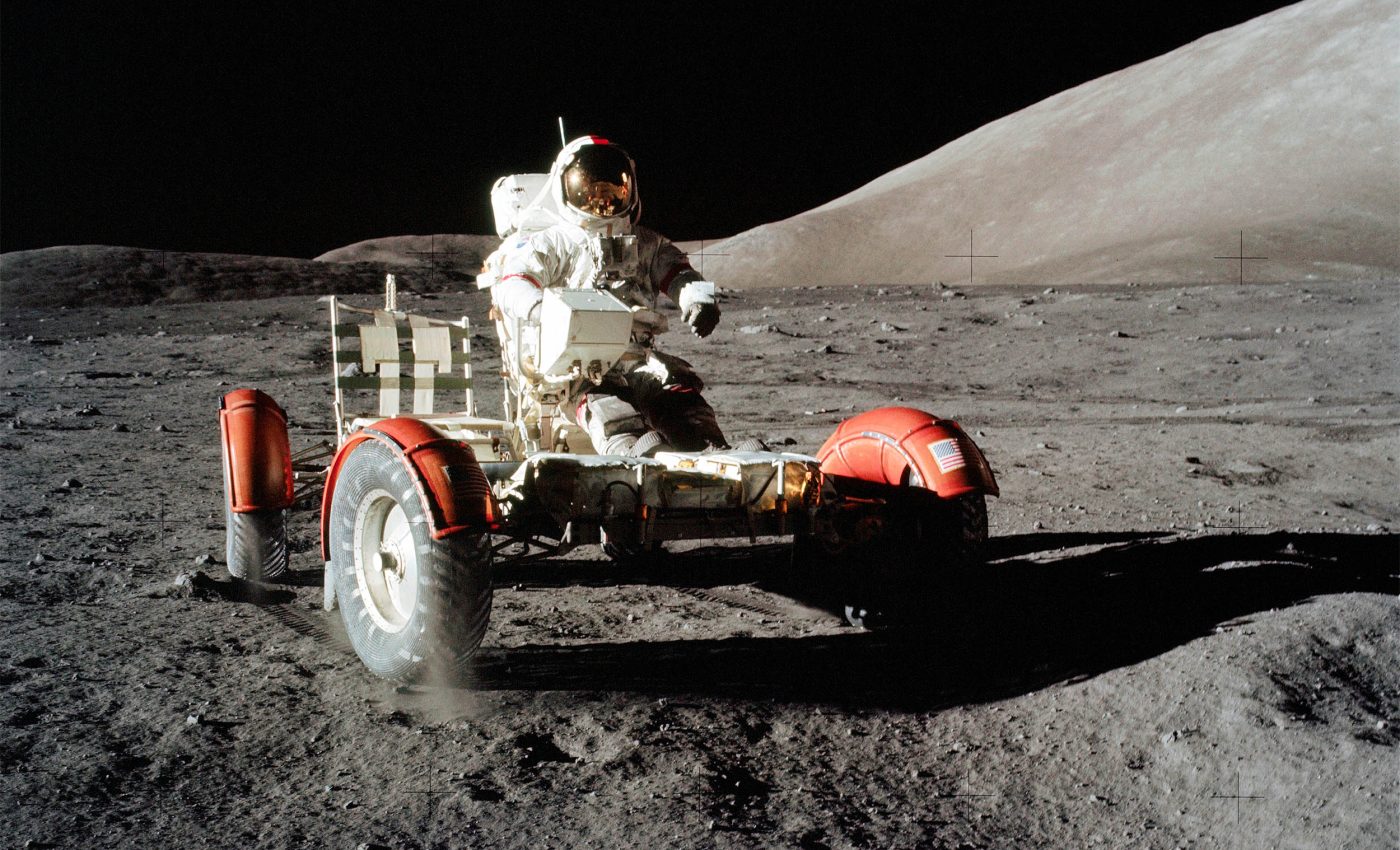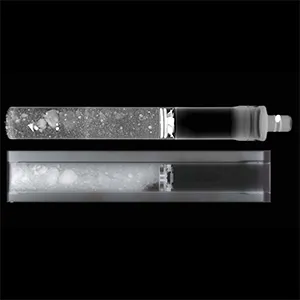
Sealed lunar soil sample from Apollo 17 offers new insight for future moon explorers
Apollo 17 carried home a sealed tube of lunar soil in 1972. More than five decades later, that core has finally been opened and analyzed, and it is changing what scientists think about how a major lunar landslide moved and settled.
The deposit in question is the Light Mantle, a bright streak in Taurus-Littrow Valley at the base of the South Massif. It is the only extraterrestrial landslide ever sampled on-site, and it runs roughly 3.1 miles along the valley floor.
Old lunar soil informs new missions
“This research is a way of continuing the legacy of the Apollo missions more than 50 years later, providing a bridge to the planned Artemis program,” said Dr. Giulia Magnarini at the Natural History Museum (NHM) in London who led the work.
NASA set up the Apollo Next Generation Sample Analysis program, or ANGSA, to learn how to handle and study old cores as a rehearsal for new ones that Artemis will return.
The program treated the newly opened Apollo cores as a low-cost sample return mission to test tools, workflows, and cross team coordination.
Before any dissection, the tube was scanned at the University of Texas High Resolution X-ray computed tomography facility (UTCT). Images were taken at a 12.9-micrometer voxel size to preserve context and guide the lab work.
Those scans are a non-destructive way to see the internal structure and to protect fragile textures until scientists know what to cut and what to leave intact.
Apollo soil shows granular flow
The team reports two signature features of this lunar soil sample. First, the upper roughly two inches of the core is missing larger fragments. This is a clue that the shallow layer was reworked by the lunar surface environment after the landslide stopped.
Second, many particles show a rind of ultrafine grains wrapped around a central chip, forming what geologists call clast cortex aggregates.
That texture shows granular flow, with grains rolling and sliding past each other instead of moving as one block.
Independent work on the same tube’s finest dust backs up the idea of an altered skin at the top of the deposit.
Researchers found the highest concentration of space-weathering products in the upper few inches. This marked a distinct surface-modified layer overlying more uniform material below.
Together, those lines of evidence tighten the case that the Light Mantle did not just slump once and sit unchanged. Grains slid downslope in a rich flow, and the airless environment later churned and peppered the surface zone.
Light Mantle preserved in lunar core
The Light Mantle sits at the foot of a massif that rises about 1.4 miles above the valley floor. That relief explains how debris traveled over 3 miles across a low slope without water or air for lubrication.
Apollo 17 also made history for a different reason. Geologist Harrison Schmitt became the first scientist to walk on the Moon. It’s a decision that paid off in field notes, sample choices, and careful documentation still used today.
The mission returned about 243 pounds of lunar rock and soil, the largest haul of any Apollo crew. Among those samples was a double drive tube that reached down roughly 28 inches at Station 3, the very core section later opened for this study.
That tube preserved both the upper skin and deeper layers of the landslide deposit in one vertical slice. It gave the team a way to compare shallow, weathered material with the less modified section below in a single continuous record.

Tycho impact or moonquake
What pushed the South Massif slope past the point of no return remains under debate. One candidate is a shower of fast-moving debris launched by the impact that formed Tycho Crater.
Secondary pockmarks near the massif hint that some of those fragments may have hit the area and shaken the slope loose.
Another idea points to local tectonics. Studies of faults and ridges in the valley have argued that seismic shaking along the Lee Lincoln fault zone could have provided the trigger at the right time and place.
The new core textures do not settle that “starting gun” question, and the authors say more work is in progress. The textures reveal how the slide behaved after it began – insight beyond what orbital images alone provide.
Lunar soil guides safe building
Understanding how regolith behaves under stress is not only an academic problem. Artemis planning needs better data on how loose lunar soil compacts, flows, and carries loads under low gravity if we want to build safe routes, pads, and shelters near rough terrain.
“These samples are about how to preserve, store and open lunar material without damaging the contents,” said Dr. Magnarini. “This is already feeding into plans for Artemis’ science and helping to develop new instruments.”
There is also a scientific payoff beyond engineering. With the Light Mantle, researchers can compare an on-site sample set to a well-mapped surface deposit. They can then test mechanical models against real textures at millimeter and inch scales.
The feedback loop – from field context to lab imaging to model testing – grows stronger as researchers open more cores and bring new ones home.
ANGSA has shown how to do that work without losing precious context, and that know-how will carry straight into the next decade of lunar exploration.
Artemis missions expand Apollo’s legacy
Future analyses will extend below the upper 8 inches already imaged in detail and will refine how often clast cortex aggregates occur with depth.
A clear rise or fall in abundance could reveal shifting shear conditions as the slide thinned and settled.
Researchers are also revisiting maps of secondary craters and small impact scars that cross the Light Mantle.
New correlations between crater clusters, slope breaks, and in-core textures could help decide whether Tycho’s debris shower or local quakes are the better match for the trigger history.
Artemis will return new cores from fresh sites, including places with different slopes and rock types.
Each one will add another test of how dry, airless slides move on a body where liquid water and thick air do not play a role.
The same methods will also help engineers read the shallow subsurface near planned habitats.
A better handle on layering, particle size, and cohesion could steer where to build and how to protect sensitive hardware from dust and ejecta.
—–
Featured image: Astronaut Eugene A. Cernan, commander, drives the Lunar Roving Vehicle during first Apollo 17 extravehicular activity at the Taurus-Littrow landing site. July 20, 1969. Credit: NASA
The study is published in the Journal of Geophysical Research: Planets.
—–
Like what you read? Subscribe to our newsletter for engaging articles, exclusive content, and the latest updates.
Check us out on EarthSnap, a free app brought to you by Eric Ralls and Earth.com.
—–













